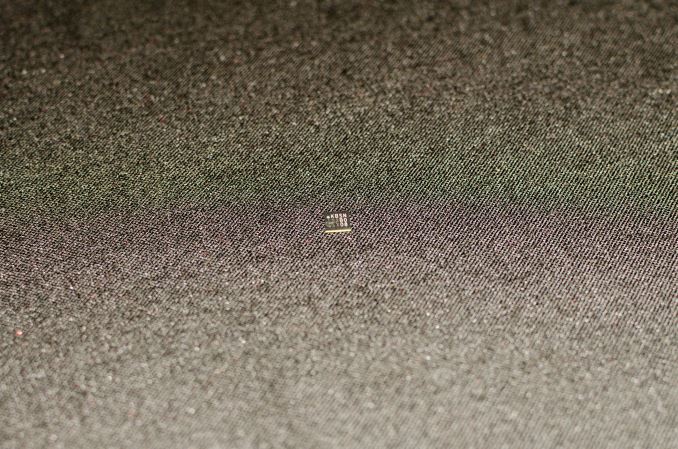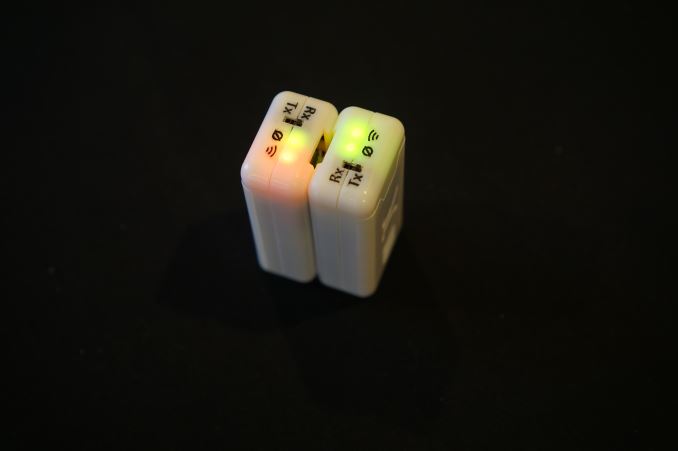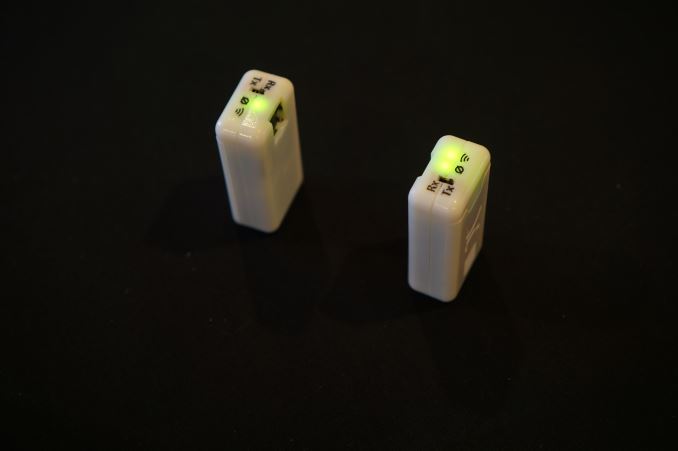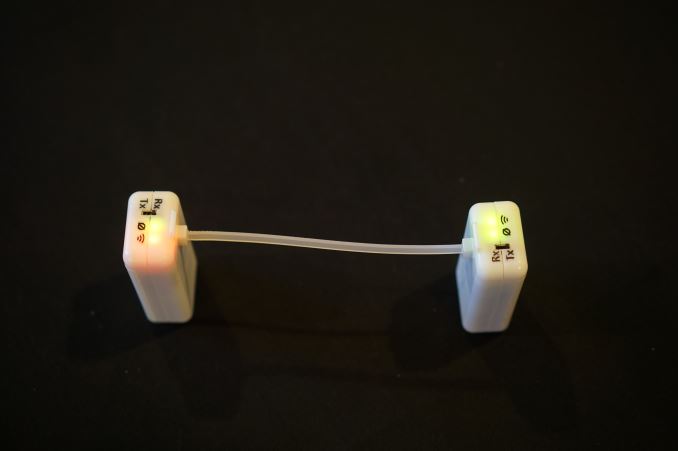Revisiting Keyssa: Commercial Availability, Products in Q1 2016
by Joshua Ho on January 7, 2016 7:00 AM EST- Posted in
- Mobile
- Trade Shows
- Keyssa
- CES 2016

While we talked about Keyssa at CES last year, details were rather sparse as the technology was still in the early stages of getting off the ground. However, this year Keyssa’s connector technology is now commercially available. Based upon discussions with those at Keyssa, products with this new technology could ship as early as Q1 2016.
For those that haven’t seen Keyssa in action before, it’s hard to really understand the potential of this technology. At a high level, it’s basically like NFC in the sense that this technology is very short range wireless with a range of roughly an inch or a few centimeters before the 60 GHz signal disappears completely. However, within that range you get 6 Gbps of bandwidth and relatively low power compared to something like 802.11ad/WiGig. Unlike 802.11ad WiFi, the connector and chip needed to enable this technology is almost absurdly tiny, as the chip is no more than a few millimeters squared. This is purely a physical layer technology, which means that at the operating system level a Keyssa connector can appear to be USB, DisplayPort, HDMI, SATA, PCIe, and pretty much any point to point digital connection protocol you can name today.
As a result, Keyssa has the potential to completely do away with physical data ports in devices. Probably the most obvious example of this would be 2-in-1 hybrid devices like the Surface Book, which in theory could completely do away with all of the wired connections that introduce additional engineering challenges when designing a device like the Surface Book.
Keyssa has also discussed the potential to replace flex cables internally in smartphones and other devices, which could reduce board area and/or z-height along with simplifying design and reducing cost as flex cables would no longer need to be laid out by hand.
This connector can also use simple plastic with certain shapes like tubes to introduce directionality and make wire-like connections over distance without the need for actual wires or proper connections.
Overall, Keyssa shows great potential and judging by the discussions I’ve had there’s a significant amount of interest from OEMs and ODMs for this technology, with hints that devices with this technology are already in development. It’s hard to say what the full potential of this technology is, but it’s definitely going to be interesting to see how this develops.













28 Comments
View All Comments
ssj4Gogeta - Thursday, January 7, 2016 - link
This sounds great. Pair this with magnetic connectors and you can have devices without any physical ports. Some obvious advantages are easier waterproofing, reduced chances of mechanical damage to the ports, and better dust protection. Coupled with wireless power transfer, I can imagine all the ports being replaced with painted markings.ddriver - Thursday, January 7, 2016 - link
Wonder why they chose such low framerate video for the demo...JoshHo - Thursday, January 7, 2016 - link
The Nikon D7000 camera is limited to 1080p24 video recording unfortunately.ddriver - Friday, January 8, 2016 - link
The video played in the video is much lower than 24 fps, I mean the CG animation, not the live action video.Derjis - Friday, January 8, 2016 - link
Looks like the video is shot with a low shutter angle, reducing the motion blur, and making the video look a little more judder-y. The video on-screen looks like it's more stop-motion than traditional CG, so the effective framerate is most likely lower than the 24fps the demo video is apparently shot at.ddriver - Friday, January 8, 2016 - link
The video in the video looks like 5 FPS or something. That's hardly a good choice if you want to demonstrate smooth playback.On the other hand, it is the only choice if you want to hide the fact that your product is performing poorly. 8 gbit outta be enough for 1080p30, so why not pick a video that showcases it running smoothly?
asdacap - Thursday, January 7, 2016 - link
This is actually quite revolutionary. Imagine a phone with no port. Charging through wireless charger and a special wireless hub for USB connection. Of course, the phone will likely still have audio jack... and it may not be the best idea, but its now possible.someotheruser - Thursday, January 7, 2016 - link
Why even a Audio Jack? (backwards compatibility - meh!) - with this amount of bandwidth all ports can be replaced.....Armisael - Thursday, January 7, 2016 - link
I'd want a really firm connection on my audio-out port, given that my phone'll be in my pocket while I'm walking/riding a bike/running/etc.ddriver - Thursday, January 7, 2016 - link
In order to drive headphones, the signal level needs to be fairly high. The headphone jack doesn't transfer information, but modulated power. Using this for headphones would require the headphones to come with a power source and built in amplifier.I would not be surprised if vendors go this way. They'd love nothing more than having to cram amplifiers into each set of headphones, as that would justify a higher profit margin.